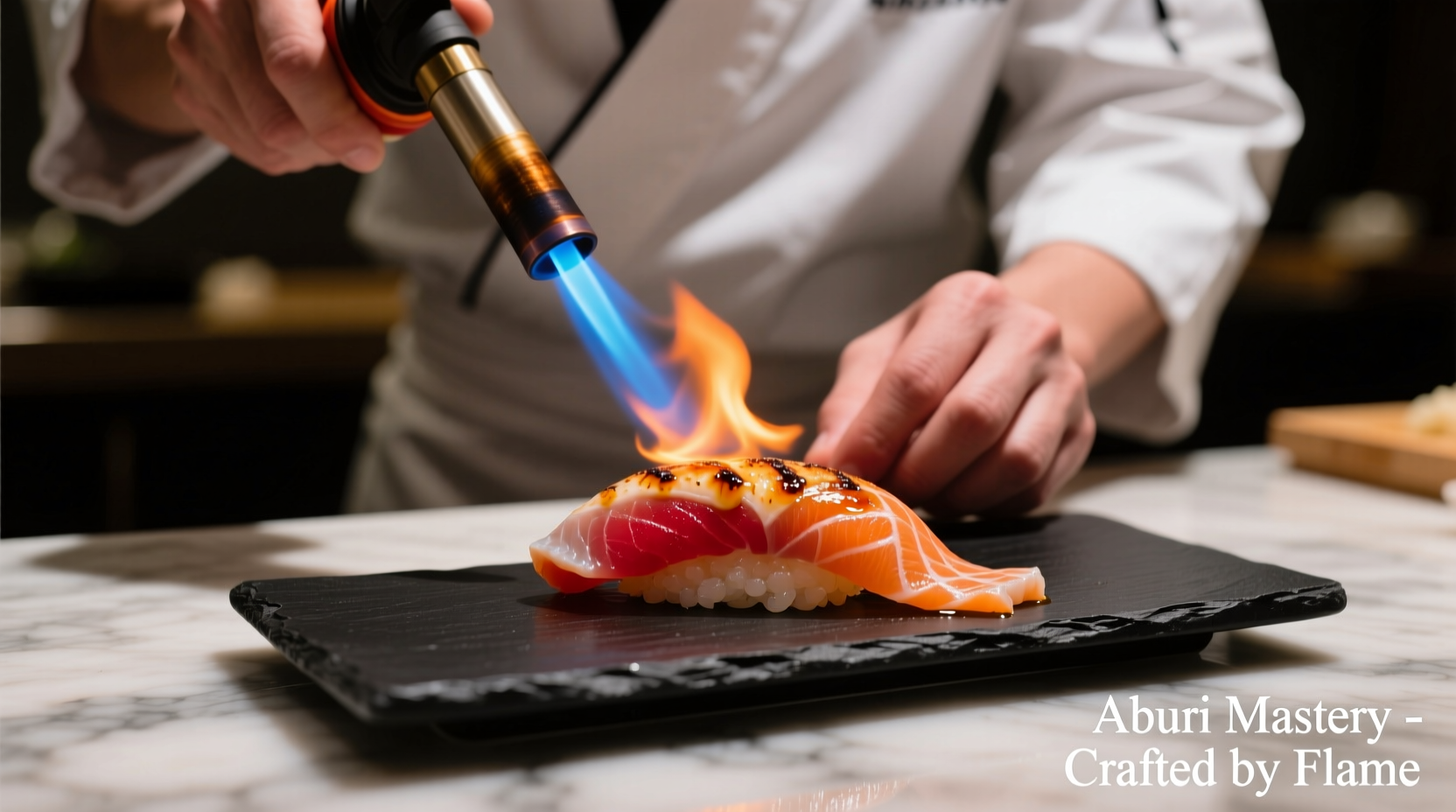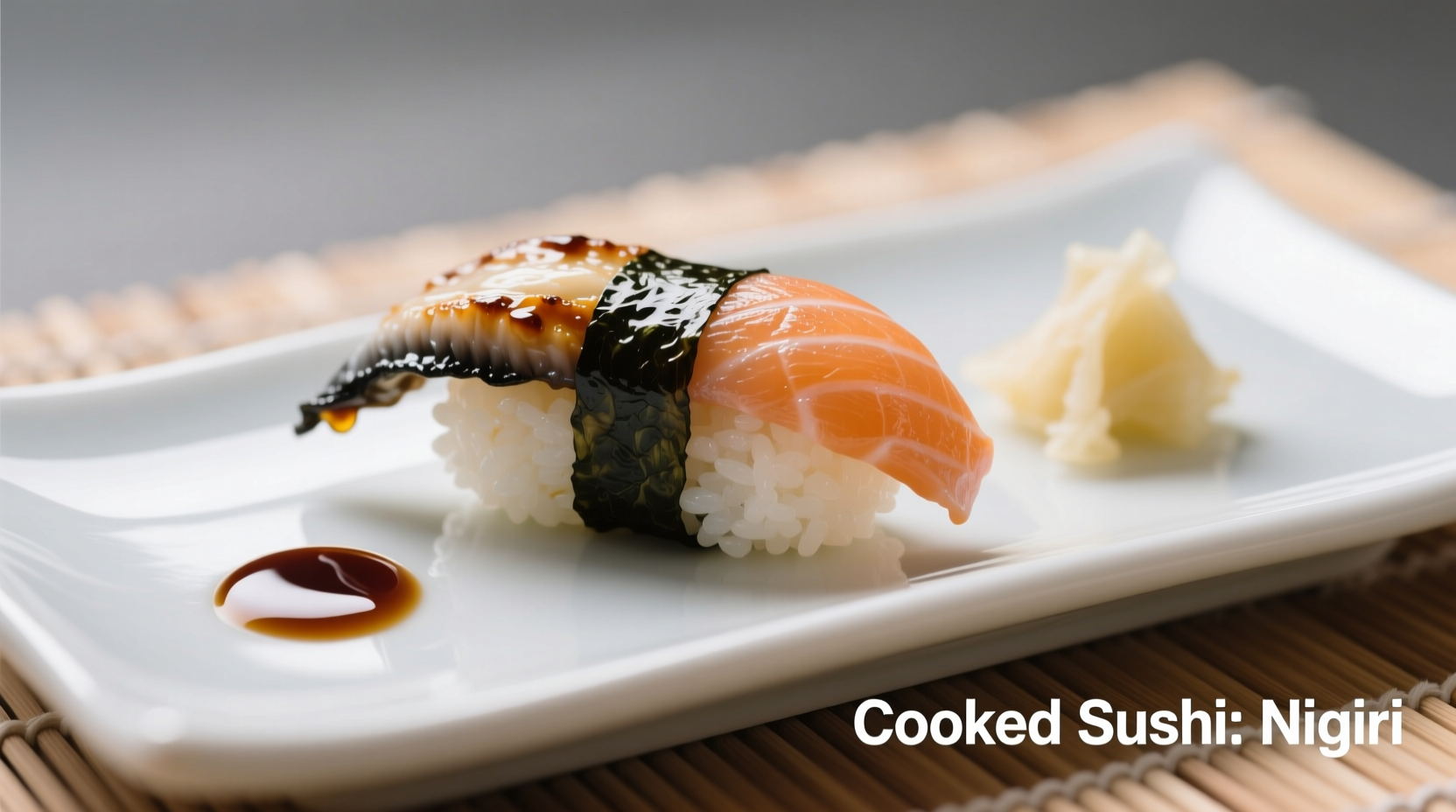Many people mistakenly believe all sushi contains raw fish, but Japanese culinary tradition actually includes numerous cooked variations. Understanding these options opens up a world of flavors for sushi lovers who avoid raw seafood or simply want to explore beyond traditional nigiri and sashimi.
The Evolution of Cooked Sushi: From Preservation to Culinary Art
Sushi's origins trace back to Southeast Asia where fish was preserved by fermenting with rice and salt—a process that often involved cooking elements. When this technique reached Japan around the 8th century, cooks began experimenting with different preparation methods. The Edo period (1603-1868) marked a turning point when street vendors in Tokyo (then Edo) started serving nigiri with fresh fish, but many traditional preparations remained cooked.
| Cooked Sushi Type | Preparation Method | Common Ingredients | Flavor Profile |
|---|---|---|---|
| Aburi Sushi | Lightly torched | Salmon, mackerel, scallops | Smoky exterior, tender interior |
| Inari Sushi | Fried tofu pockets | Sweetened fried tofu, sushi rice | Sweet, savory, umami-rich |
| Unagi Nigiri | Grilled eel with sauce | Freshwater eel, sweet soy glaze | Sweet, smoky, tender |
| Anago Nigiri | Simmered saltwater eel | Saltwater eel, light broth | Delicate, subtle sweetness |
Aburi Sushi: The Modern Art of Lightly Seared Fish
Aburi sushi ("aburi" meaning "flame-seared" in Japanese) has gained popularity as a creative preparation that transforms traditional raw fish sushi. Chefs carefully torch the surface of fish like salmon or mackerel using a culinary torch, creating a delicate char that enhances flavor while keeping the interior cool and tender. This technique developed in the late 20th century as chefs sought to expand sushi's flavor profile while maintaining its essence.
The searing process triggers the Maillard reaction, developing complex umami compounds that complement the fish's natural sweetness. Unlike fully cooked fish preparations, aburi maintains the delicate texture sushi connoisseurs appreciate while offering a warm contrast to the cool rice beneath.
Traditional Cooked Sushi Varieties You Should Know
Beyond aburi, Japanese cuisine features several cooked sushi preparations that have been enjoyed for generations:
- Inari sushi - Sweet fried tofu pockets filled with sushi rice, named after the Shinto god Inari. The tofu is simmered in a sweet broth of soy sauce, sugar, and mirin before being stuffed with vinegared rice.
- Unagi (freshwater eel) - Always grilled and basted with a sweet soy-based sauce, unagi nigiri offers a rich, buttery texture that melts in your mouth.
- Anago (saltwater eel) - Simmered rather than grilled, anago has a more delicate flavor and softer texture than unagi.
- Kani (crab) - Most sushi restaurants use cooked crab or imitation crab in rolls like California rolls.
- Tamago (sweet egg omelet) - A slightly sweet, layered egg preparation that's cooked on a special rectangular pan.

Where to Find Authentic Cooked Sushi
When seeking cooked sushi options, look for specialized terms on menus or ask servers about preparation methods. Reputable sushi restaurants often indicate cooking methods—"aburi" for seared, "yaki" for grilled, or "nimono" for simmered preparations. High-end establishments might offer seasonal cooked specials featuring local ingredients prepared with traditional Japanese techniques.
According to the Japan External Trade Organization's culinary documentation, cooked sushi preparations account for approximately 30% of all sushi consumed in Japan, reflecting their deep integration into the culinary tradition. This statistic often surprises Western diners who associate sushi exclusively with raw fish.
Common Misconceptions About Cooked Sushi
Many believe cooked sushi is somehow "less authentic" than raw preparations, but this overlooks sushi's historical evolution. Early forms of sushi involved fermented fish that was often cooked, and many traditional preparations remain cooked today. The misconception likely stems from Western exposure to sushi during the 1980s when raw fish presentations became popular exports.
Another common misunderstanding is that all cooked sushi is suitable for pregnancy or immunocompromised individuals. While cooked options eliminate raw fish concerns, proper food handling remains essential. The FDA's Food Code guidelines emphasize that cooked seafood must reach specific internal temperatures to ensure safety.
Exploring Cooked Sushi at Home
Creating cooked sushi at home offers a great entry point for beginners. Start with simple preparations like tamago (sweet egg omelet) or inari pockets, which require no special equipment. For aburi-style sushi, a small culinary torch (available at kitchen supply stores) can transform store-bought sushi-grade fish with minimal effort. Remember that authentic sushi rice preparation—using the proper rice-to-vinegar ratio and cooling technique—remains essential regardless of your topping choices.











 浙公网安备
33010002000092号
浙公网安备
33010002000092号 浙B2-20120091-4
浙B2-20120091-4